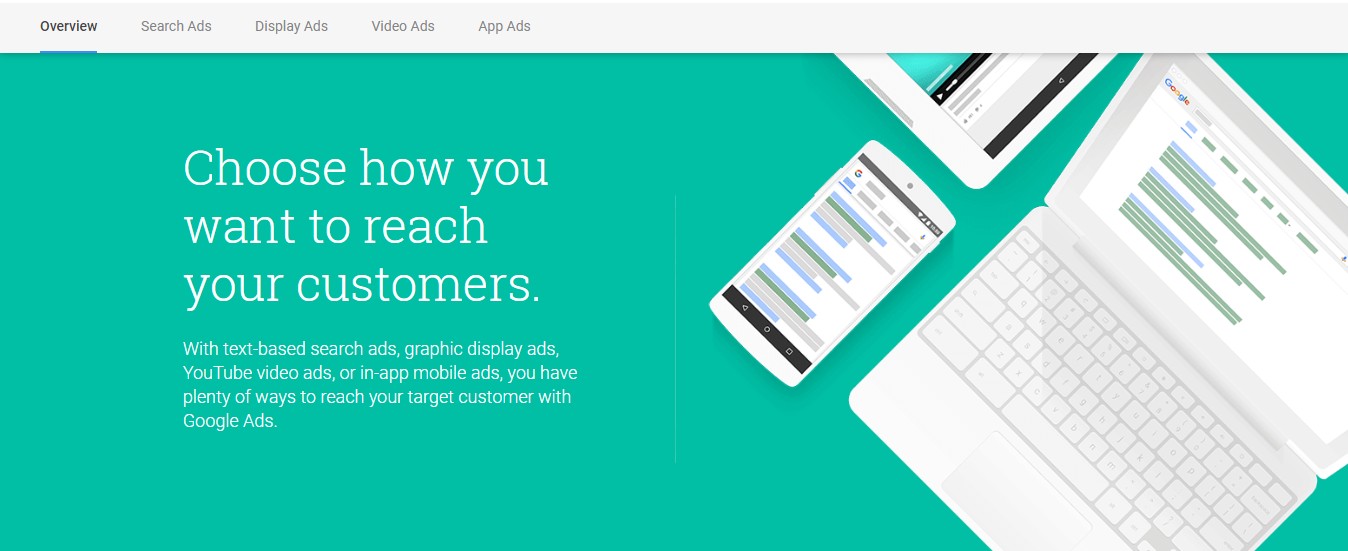Google was founded in 1998 by Sergey Brin and Larry Page in August 2004. Being a successful business, currently, it has more than 70 offices in over 50 countries around the globe.
Today, Alphabet (which is the parent company of Google) owns more than 200 companies, including those involved in robotics, mapping, advertising, and other spheres.
As you may know, Google Ads is one of Google’s greatest tools and an online advertising program. It allows you to create online ads and promote your products and services reaching to your customers through the online platform.
The Google Ads platform runs on pay-per-click (PPC) advertising. This means that you have to pay every time a visitor clicks your ad. If you build your campaign wise, this can be one of your successful marketing strategies.
Google has introduced 3 new bidding strategies for Google Ads advertisers that offer more flexibility than Smart Bidding.
According to Netmarketshare.com, Google owns 71% of the whole search market share. Moreover, 89% of the traffic generated by search ads is not replaced by organic clicks when ads are paused.
While users are satisfied with Google’s automated bidding solutions, Google’s working on its products’ efficiency and customizations.
Recently, Google has introduced 3 new bidding strategies. If you’re new in Digital Marketing and generally, in the Google Ads platform, we advise you to watch this video and find out how search ads work first and then explore the rest of the article:
Related Article: Facebook Launches New Tools for SMEs
Campaign-level Conversion Settings
If you’re using Google Ads, you’ll now be able to set conversion goals at the campaign level.
Previously, there was a limit of setting conversion goals at the account level. That meant that all campaigns within the account would have the same conversion goals.
The game has changed! Now you can map relevant conversion goals at the campaign level. Yes, it’s possible! If you haven’t clearly differentiated campaign goals yet, this can be enormously useful for your account.
Seasonality Adjustments
Smart Bidding: This kind of strategy uses machine learning to optimize your bids to maximize conversions and conversion value across your campaign or bidding portfolio.
Advertising people have been asking for more control with regards to seasonality beyond what is offered by smart bidding.
For instance, if you need control to account for ad hoc events like one-time promotions, you can find your solution in seasonality adjustments. You can simply schedule an adjustment for periods of time when conversion rates are expected to spike. That’s it!
Maximize Conversion Value

The next launched bidding strategy is the Maximizing conversion value. This is a new tool that allows advertisers to optimize for the most conversion value within a specified budget.
Until today, Google Ads bidding strategies around conversion have been more focused on efficiency.
However, before switching to maximize conversion value bidding you should check your daily budget amount. Why? Simply because maximize conversion value will try to fully spend your daily budget.
If you’re currently spending much less than your budget, maximize conversion value could increase spending significantly so be careful.
Next, check your return-on-investment (ROI) goals. Perhaps, you may want to add a Target ROAS to your bid strategy or change anything else.
Conclusion
Building a Digital Marketing strategy where Google Ads play a vital role is crucially important for your business strategy.
However, you should do a top-down or bottom-up investigation to find out if you’ve created a successful campaign or you need to change something.
Remember – preparation and cautiousness is good, but if you don’t monitor your changes within the time and fail to capture the whole picture, you will plan your failure, so be careful. Good luck!
James is the Founder & CEO of GurusWay.com. Majoring in Business and other life-changing sectors, James covers helpful content and shares his experience with the targeted audience.